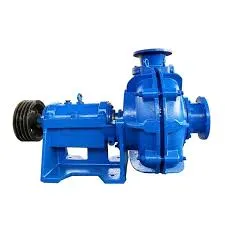TEL:
+86 13120555503
Hindi
- Afrikaans
- Albanian
- Amharic
- Arabic
- Armenian
- Azerbaijani
- Basque
- Belarusian
- Bengali
- Bosnian
- Bulgarian
- Catalan
- Cebuano
- Corsican
- Croatian
- Czech
- Danish
- Dutch
- English
- Esperanto
- Estonian
- Finnish
- French
- Frisian
- Galician
- Georgian
- German
- Greek
- Gujarati
- Haitian Creole
- hausa
- hawaiian
- Hebrew
- Hindi
- Miao
- Hungarian
- Icelandic
- igbo
- Indonesian
- irish
- Italian
- Japanese
- Javanese
- Kannada
- kazakh
- Khmer
- Rwandese
- Korean
- Kurdish
- Kyrgyz
- Lao
- Latin
- Latvian
- Lithuanian
- Luxembourgish
- Macedonian
- Malgashi
- Malay
- Malayalam
- Maltese
- Maori
- Marathi
- Mongolian
- Myanmar
- Nepali
- Norwegian
- Norwegian
- Occitan
- Pashto
- Persian
- Polish
- Portuguese
- Punjabi
- Romanian
- Russian
- Samoan
- Scottish Gaelic
- Serbian
- Sesotho
- Shona
- Sindhi
- Sinhala
- Slovak
- Slovenian
- Somali
- Spanish
- Sundanese
- Swahili
- Swedish
- Tagalog
- Tajik
- Tamil
- Tatar
- Telugu
- Thai
- Turkish
- Turkmen
- Ukrainian
- Urdu
- Uighur
- Uzbek
- Vietnamese
- Welsh
- Bantu
- Yiddish
- Yoruba
- Zulu
Telephone: +86 13120555503
Email: frank@cypump.com
जनवरी . 14, 2025 12:06 Back to list
Vertical Slurry Pumps
Understanding the intricacies of slurry pump pricing demands a comprehensive approach that balances real-world insights with expert knowledge. A slurry pump, essential for handling mixtures of liquid and solid particles, finds applications in a myriad of industries, from mining to wastewater treatment. The cost of a slurry pump is influenced by a multitude of factors which can be streamlined into core components to guide purchasing decisions and long-term investment.
Furthermore, the scope of the application dictates the pump specifications and, consequently, its price. Custom-designed pumps tailored for specific operational needs, such as those handling particulates with unique chemical compositions or those operating under extreme temperature and pressure conditions, involve higher manufacturing complexity and cost. Off-the-shelf solutions, while more affordable, may not meet the nuanced demands of specialized applications. Operational considerations, such as maintenance and ease of servicing, further contribute to the pump’s total cost of ownership. Pumps equipped with smart monitoring systems and designed for quick maintenance can lower downtime and reduce labor costs over the pump’s lifespan, thereby offering savings beyond the initial purchase price. Lastly, market factors, including supply chain dynamics, manufacturing costs, and global demand trends, invariably influence pricing. The post-pandemic economic landscape and geopolitical events have reshaped supply chain paradigms, causing shifts in raw material availability and manufacturing efficiency. Staying informed about these trends can aid potential buyers in making strategic purchasing choices. In conclusion, navigating the slurry pump market necessitates a firm grounding in both product-specific nuances and broader market trends. Making informed decisions requires a balance between immediate financial considerations and the long-term performance benefits. By understanding these facets, buyers can ensure they invest in slurry pumps that not only meet their operational requirements but also provide sustainable value.


Furthermore, the scope of the application dictates the pump specifications and, consequently, its price. Custom-designed pumps tailored for specific operational needs, such as those handling particulates with unique chemical compositions or those operating under extreme temperature and pressure conditions, involve higher manufacturing complexity and cost. Off-the-shelf solutions, while more affordable, may not meet the nuanced demands of specialized applications. Operational considerations, such as maintenance and ease of servicing, further contribute to the pump’s total cost of ownership. Pumps equipped with smart monitoring systems and designed for quick maintenance can lower downtime and reduce labor costs over the pump’s lifespan, thereby offering savings beyond the initial purchase price. Lastly, market factors, including supply chain dynamics, manufacturing costs, and global demand trends, invariably influence pricing. The post-pandemic economic landscape and geopolitical events have reshaped supply chain paradigms, causing shifts in raw material availability and manufacturing efficiency. Staying informed about these trends can aid potential buyers in making strategic purchasing choices. In conclusion, navigating the slurry pump market necessitates a firm grounding in both product-specific nuances and broader market trends. Making informed decisions requires a balance between immediate financial considerations and the long-term performance benefits. By understanding these facets, buyers can ensure they invest in slurry pumps that not only meet their operational requirements but also provide sustainable value.
Share
Latest news
-
Heavy-Duty Mining Sludge Pumps - Wear-Resistant Slurry Handling
NewsAug.02,2025
-
Horizontal Split Case Pump with GPT-4 Turbo | High Efficiency
NewsAug.01,2025
-
ISG Series Pipeline Pump - Chi Yuan Pumps | High Efficiency, Durable Design
NewsAug.01,2025
-
Advanced Flue Gas Desulfurization Pump with GPT-4 Turbo | Durable & Efficient
NewsJul.31,2025
-
ISG Series Vertical Pipeline Pump - Chi Yuan Pumps | Advanced Hydraulic Design&Durable Construction
NewsJul.31,2025
-
ISG Series Vertical Pipeline Pump - Chi Yuan Pumps | Energy Efficient & Low Noise
NewsJul.31,2025










